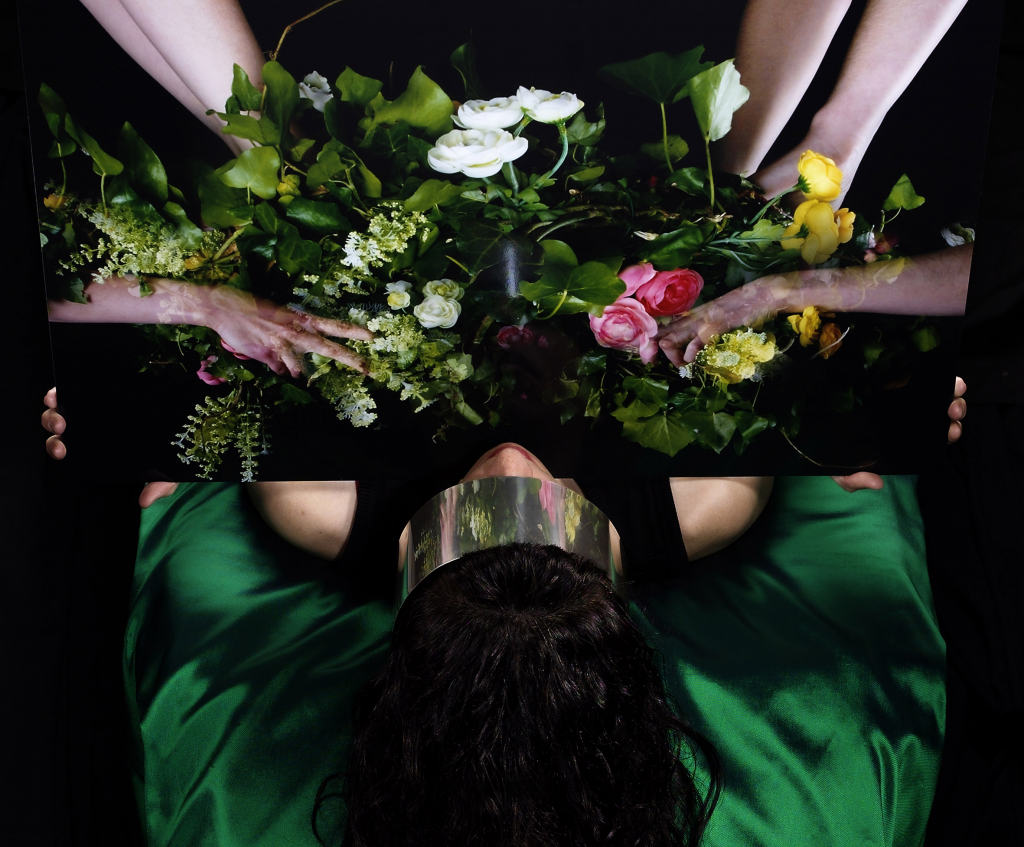Naia del CastilloOfferings and Possessions

Photography is just the last stop-off point in the creative odyssey for the young Spanish artist, Naia del Castillo. She describes the part it plays as “an expressive medium for capturing and reinforcing her ideas.” First and foremost, she creates sculptures, objects and small scenarios that she then photographs. These are often exhibited together with the subsequent images. Juxtaposing elements from different spheres of art in this way means that her work surpasses the perimeters of photography and to some extent, redefines it.
The trajectory of her work has focused on women’s relationships with their physical and psychological environments. Key themes she developed in her earlier series were the relation of women to their immediate surroundings, to domesticity, to her partner and by natural extension, to sex. Her women were literally and metaphorically linked to men, to the bed, or to the home through some item of clothing or household furnishing. She then moved on to examining aspects such as seduction and domination exercised in relationships. In this new series, her works address the craving for possessions, the avarice of wanting “to have more of something or more of someone.” Women are always at the heart of Naia del Castillo’s artistic preoccupation, and everything always refers back to them even if it is just through clothes, jewellery, makeup or some other archetypal accessory. Interestingly craftwork is traditionally viewed as characteristic of women (sewing or dressmaking in this case) which serves as an example of one of the many ways in which she brings together her feminist influences and conceptual ideas.
This is an introspective world, latent with poetry, overflowing with symbolism wherein fashion and fantasy flirt with each other. Her visual style is theatrical, one marked by ornamental bricolage. She has sacrificed the simplicity of her previous works in favour of something more dappled and mysterious in Offerings and Possessions. Conceptually too it has grown more sophisticated, ranging from more common-place objects to others that are more subconscious and profound. It borders on a surrealist analysis of dream states and involves all the trappings, objects and dresses that assume the roles embodied by women in society.
In the work, La Urraca (The Magpie), the artist muses upon the bourgeois woman who amasses tremendous wealth but is immobilised and crushed by it. The magpie vigilantly guards the reclining woman, its aggressive eyes fixed on us. Wearing a gilded dress encrusted with 12,000 sewn-on pearls, the woman is faceless, and if it weren’t for the arms, would be almost totally absent. In El arbol del joyero (The jeweller’s tree), we see a buttoned-up shirt, made from red silk, with four buttons that act as peepholes looking into feminine desire and sexuality. The tree of engagement rings stands for the financial transaction. Elsewhere in Las dos hermanas (The two sisters) two female figures are united by two huge blue aprons, as if they were Siamese twins, in an act of embracing one another. With El jardin (The Garden) we are shown a very suggestive, neo-baroque image of a brunette lying on green cloth, her vision obscured by a reflective band made up of several gold chains. Over her head she is holding up a photograph of an arrangement of flowers and arms apt to steal. Two further works complete the series: El lecho (The Bed) which displays a topless woman who sleeps upon the wonderfully ornate golden skulls that have been scalped and filled with red velvet cushions, likened to what primitive tribes would have done in their search for power and domination; and the equally opulent El hormiguero (The Ant Hill) which is made up of quasi-organic tunnels ending in enclosures where food is accumulated and stored, and in whose centre rests the Queen and her larvae.
Naia del Castillo has dramatically shifted her focus from women possessed by men and their role in the home to an ambit in which the woman is the one possessing through her tools of seduction, where possession and consequently envy and lust are obsessions with having the object of desire.
